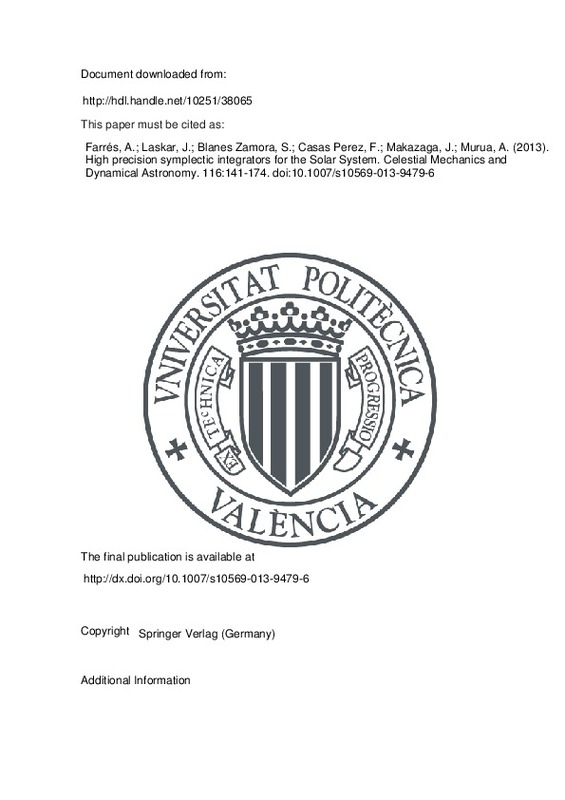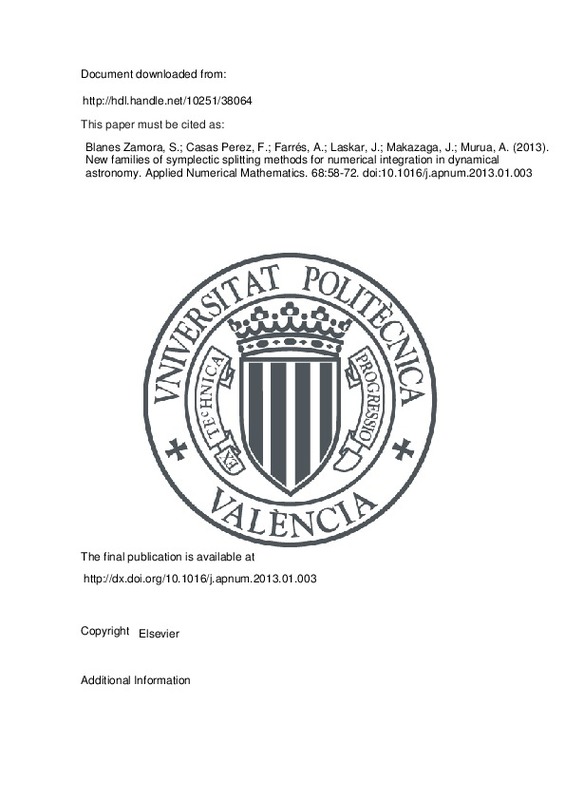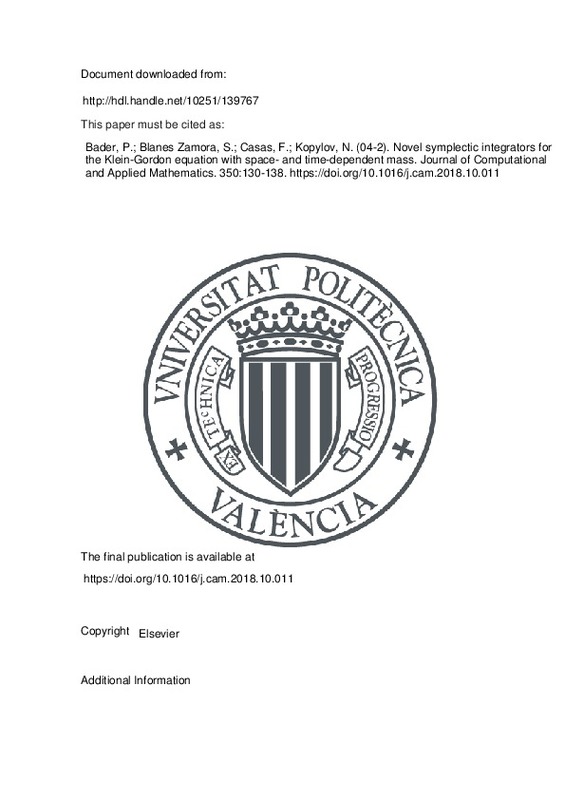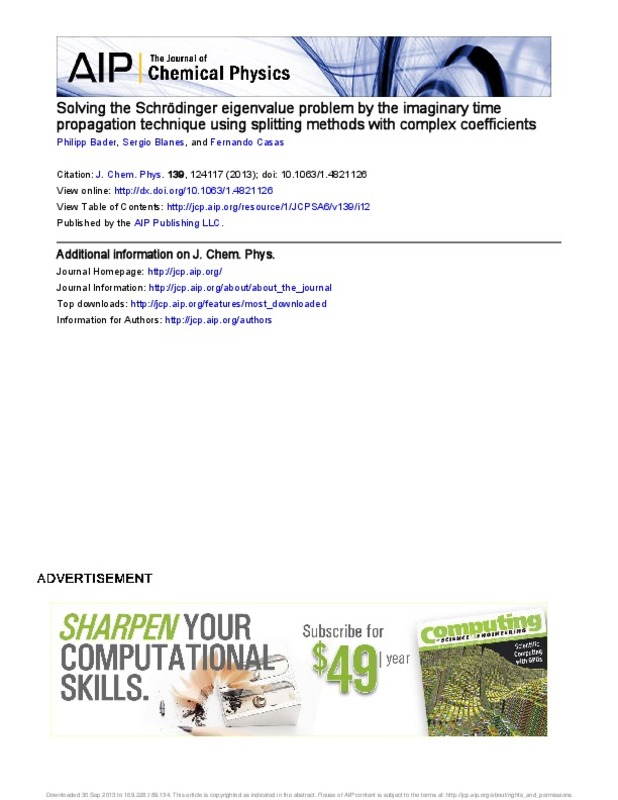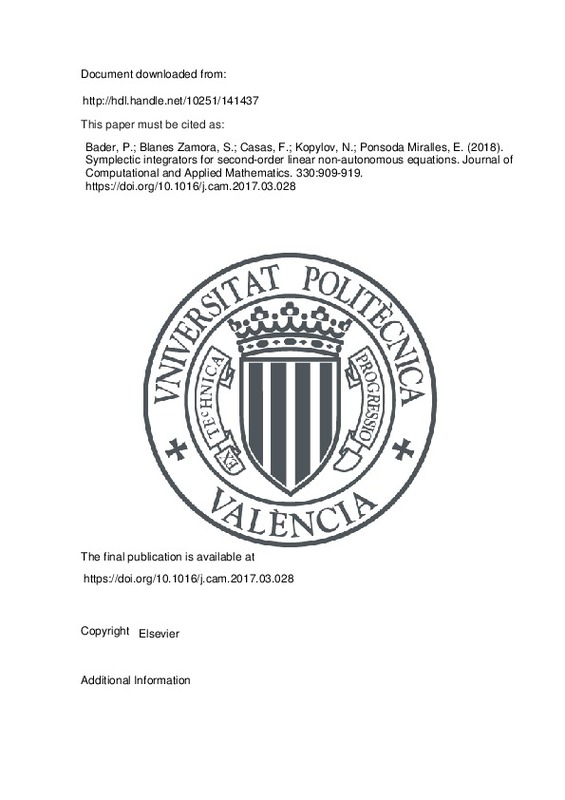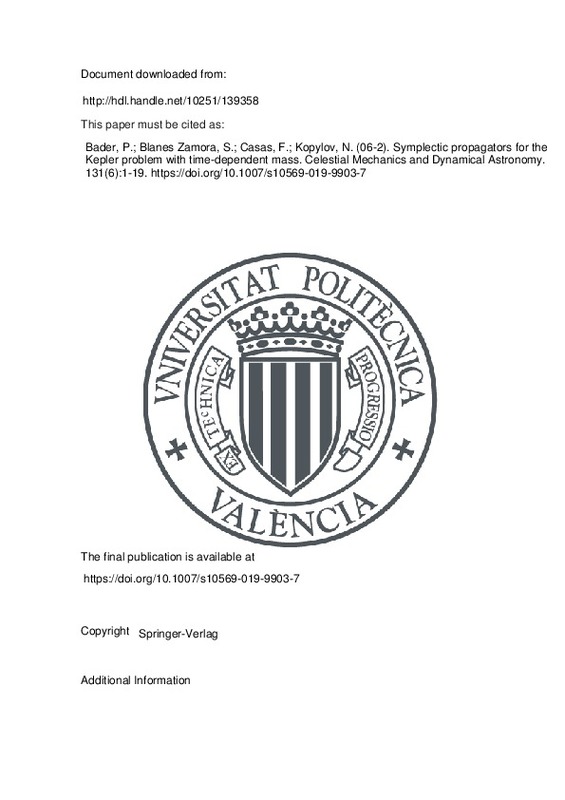

Listar por palabra clave "Symplectic integrators"
RiuNet: Repositorio Institucional de la Universidad Politécnica de Valencia
- RiuNet repositorio UPV
- :
- Listar por palabra clave
JavaScript is disabled for your browser. Some features of this site may not work without it.
Buscar en RiuNet
Listar
Mi cuenta
Ayuda RiuNet
Admin. UPV
Listar por palabra clave "Symplectic integrators"
Mostrando ítems 1-9 de 9
-
Blanes Zamora, Sergio; Iserles, Arieh (Springer Verlag (Germany), 2012-11)We consider Sundman and Poincaré transformations for the long-time numerical integration of Hamiltonian systems whose evolution occurs at different time scales. The transformed systems are numerically integrated using ...
-
Farrés, Ariadna; Laskar, Jacques; Blanes Zamora, Sergio; Casas Perez, Fernando; Makazaga, Joseba; Murua, Ander (Springer Verlag (Germany), 2013-06)Using a Newtonian model of the Solar System with all 8 planets, we perform extensive tests on various symplectic integrators of high orders, searching for the best splitting scheme for long term studies in the Solar System. ...
-
Blanes Zamora, Sergio; Casas Perez, Fernando; Farrés, Ariadna; Laskar, Jacques; Makazaga, Joseba; Murua, Ander (Elsevier, 2013-06)[EN] We present new splitting methods designed for the numerical integration of near-integrable Hamiltonian systems, and in particular for planetary N-body problems, when one is interested in very accurate results over a ...
-
Bader, Philipp; Blanes Zamora, Sergio; Casas, Fernando; Kopylov, Nikita (Elsevier, 2019-04)[EN] We consider the numerical time-integration of the non-stationary Klein-Gordon equation with position- and time-dependent mass. A novel class of time-averaged symplectic splitting methods involving double commutators ...
-
Blanes Zamora, Sergio; Casas, Fernando; Sanz-Serna, J. M. (Society for Industrial and Applied Mathematics, 2014)We construct numerical integrators for Hamiltonian problems that may advantageously replace the standard Verlet time-stepper within Hybrid Monte Carlo and related simulations. Past attempts have often aimed at boosting the ...
-
Bader, Philipp; Blanes Zamora, Sergio; Casas, Fernando (American Institute of Physics (AIP), 2013-09-28)The Schrodinger eigenvalue problem is solved with the imaginary time propagation technique. The separability of the Hamiltonian makes the problem suitable for the application of splitting methods. High order fractional ...
-
Bader, Philipp; Blanes Zamora, Sergio; Casas, Fernando; Kopylov, Nikita; Ponsoda Miralles, Enrique (Elsevier, 2018)[EN] Two families of symplectic methods specially designed for second-order time-dependent linear systems are presented. Both are obtained from the Magnus expansion of the corresponding first-order equation, but otherwise ...
-
Bader, Philipp; Blanes Zamora, Sergio; Ponsoda Miralles, Enrique; Seydaoglu, Muaz (Elsevier, 2017)[EN] We consider the numerical integration of the matrix Hill equation. Parametric resonances can appear and this property is of great interest in many different physical applications. Usually, Hill s equations originate ...
-
Bader, Philipp; Blanes Zamora, Sergio; Casas, Fernando; Kopylov, Nikita (Springer-Verlag, 2019-06)[EN] New numerical integrators specifically designed for solving the two-body gravitational problem with a time-varying mass are presented. They can be seen as a generalization of commutator-free quasi-Magnus exponential ...
Mostrando ítems 1-9 de 9

Universitat Politècnica de València. Unidad de Documentación Científica de la Biblioteca (+34) 96 387 70 85 · RiuNet@bib.upv.es



